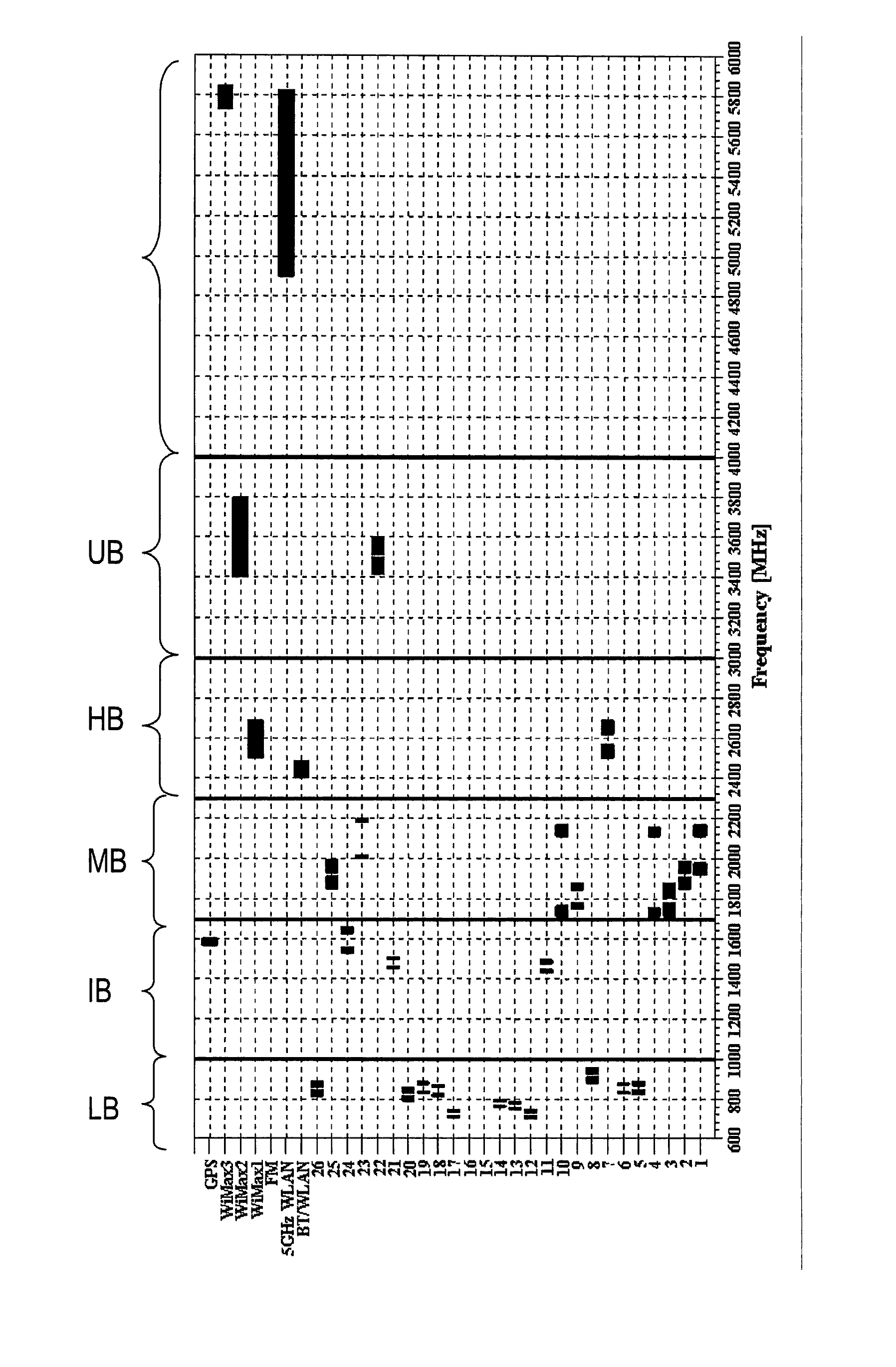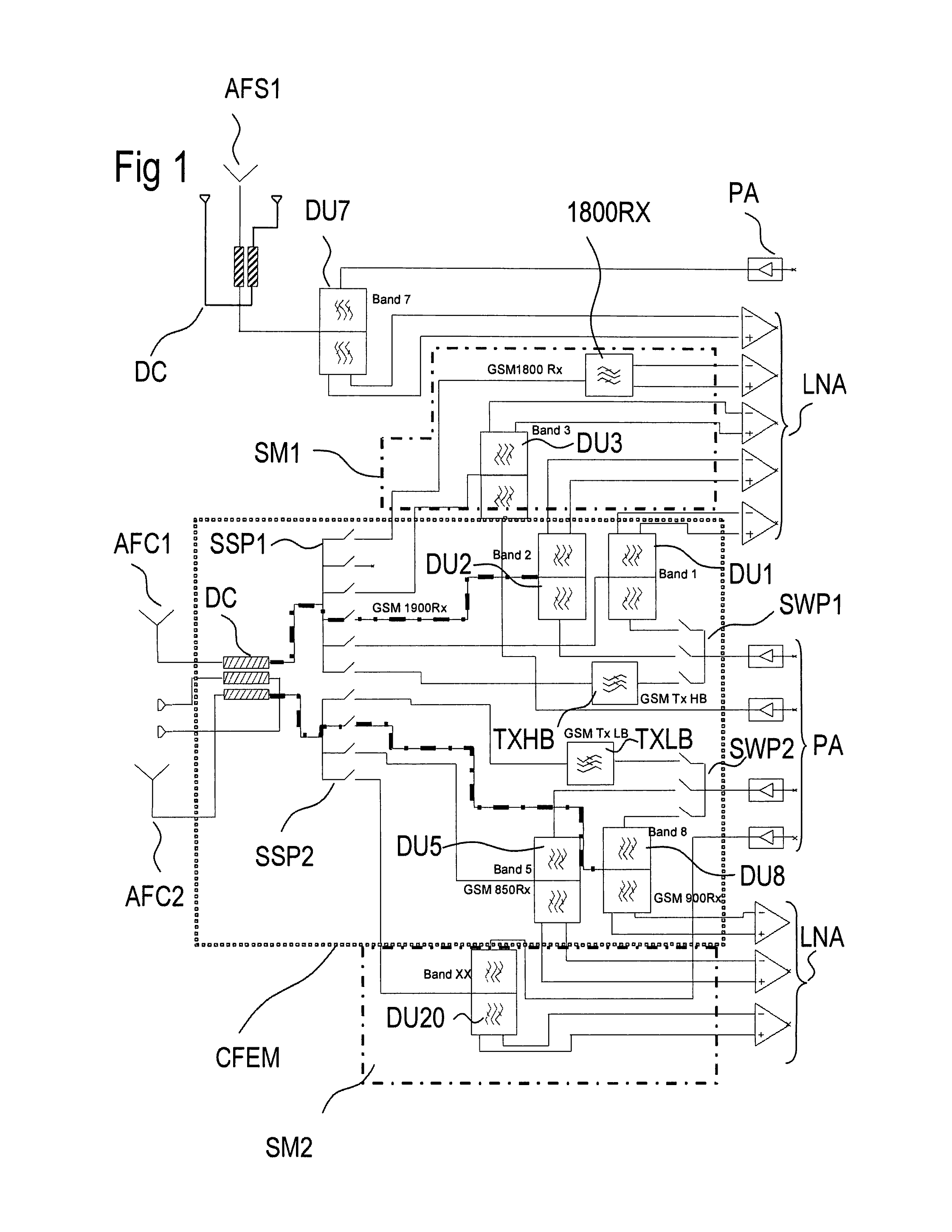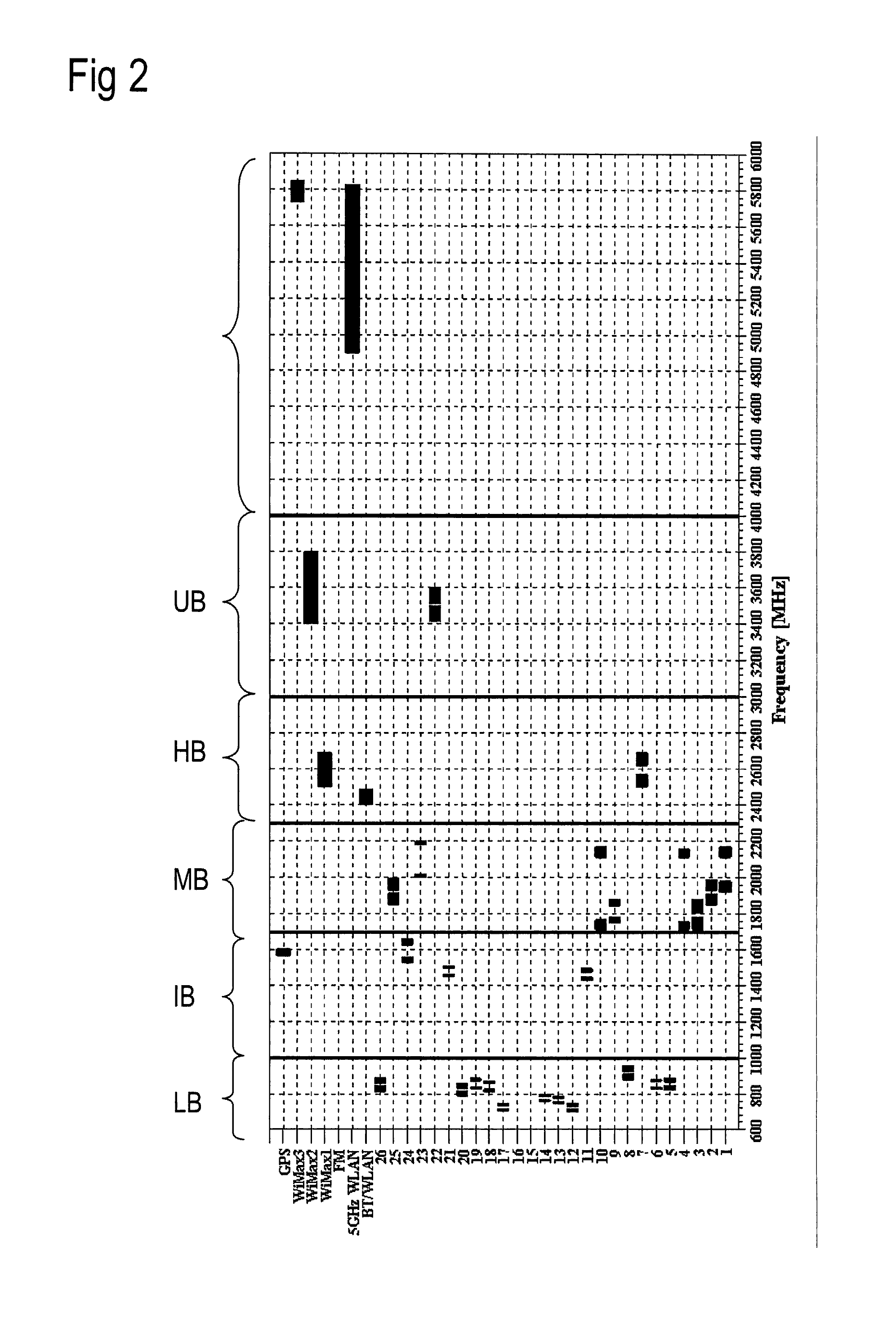Front-end Circuit for Band Aggregation Modes
a band aggregation and circuit technology, applied in the field of front-end circuits for band aggregation modes, can solve the problems of unavoidable losses at the front-end, inconvenient construction of front-end circuits with two duplexers, and inconvenient construction of front-end circuits with additional areas
- Summary
- Abstract
- Description
- Claims
- Application Information
AI Technical Summary
Benefits of technology
Problems solved by technology
Method used
Image
Examples
first embodiment
[0032]FIG. 1 shows a first embodiment according to the invention comprising a core front-end module CFEM with two core antenna feeds AFC1 and AFC2. Each antenna feed of the core front-end module is connected to a separate switch SSP1, SSP2 allowing to connect the respective switch with a desired signal path. A duplexer DU1 for band 1 and another duplexer DU2 for band 2 are connected to the first switch SSP1. Further, a Tx path comprising a Tx filter TXHB for GSM high-band operation is coupled to the first switch SSP1. Coupled to the second switch SSP2 are a third duplexer DU5 for band 5 operation and a fourth duplexer DU8 for band 8 operation. Further, a Tx filter TXLB for GSM low-band operation is coupled to the second switch SSP2. As the two duplexers DU1, DU2 and the Tx high-band filter TXHB for GSM are assigned to a frequency range that is usually named “high-band” comprising a frequency range between about 1.7-2.2 GHz, all Tx paths for this high-band can be connected to a first...
embodiment 1
[0058]All components like filters, duplexers, antenna switches and amplifier switches may be located and integrated on the same front-end module. Similar referring to FIG. 1, it is possible to position some of the signal paths in supplemental modules that are electrically connected to the core front-end module by one of the antenna switches. In all cases, only those components are coupled to the same antenna switch and thus the same antenna feed that are within the same frequency range. Systems that can produce intermodulation products disturbing the operation in other frequency bands are located in external signal paths, being coupled to a separate antenna, as shown in this embodiment for band 7 and band 11 duplexers.
second embodiment
[0059]According to the first and second embodiment, simultaneous operation is possible between all systems coupled to different antenna feeds. As shown in FIG. 3, simultaneous operation is possible also with the help of additional matching networks (e.g., MC1 and MC2 required for Band 2 and Band 4 carrier aggregation).Hence, aggregated operation modes are possible allowing to receive and operate Rx signals in different frequency ranges (or similar frequency ranges, see FIG. 3) at the same time. In an analog way, simultaneous Tx transmission in different frequency ranges is possible, too. A Tx band aggregation for the LTE standard is not yet defined but may be a future option which can be operated in an embodiment according to the invention.
[0060]FIG. 4 shows a third embodiment that is similar to the first embodiment shown in FIG. 1 and comprises one common antenna feed AF1 and one common antenna for the 1 GHz and 2 GHz frequency ranges. The two paths of the high-band and low-band ar...
PUM
 Login to View More
Login to View More Abstract
Description
Claims
Application Information
 Login to View More
Login to View More - R&D
- Intellectual Property
- Life Sciences
- Materials
- Tech Scout
- Unparalleled Data Quality
- Higher Quality Content
- 60% Fewer Hallucinations
Browse by: Latest US Patents, China's latest patents, Technical Efficacy Thesaurus, Application Domain, Technology Topic, Popular Technical Reports.
© 2025 PatSnap. All rights reserved.Legal|Privacy policy|Modern Slavery Act Transparency Statement|Sitemap|About US| Contact US: help@patsnap.com



